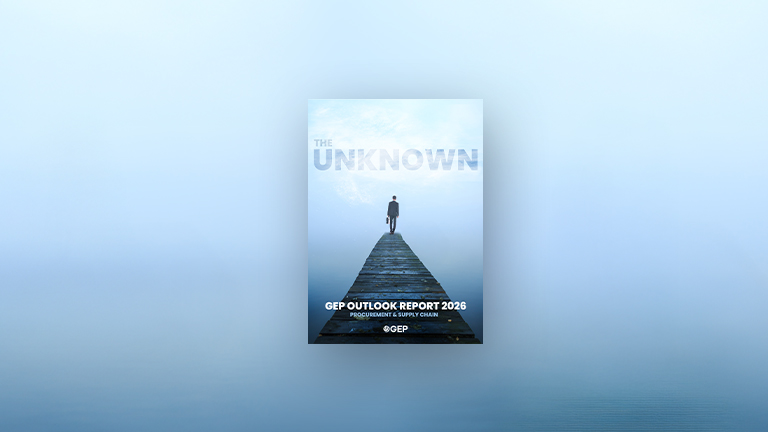
Procurement’s ESG Moment: Where Spend Meets Sustainability
- ESG is a decision-making lens, not a reporting exercise.
- Responsible sourcing builds resilience, not just compliance.
- Tech-enabled S2P makes sustainable procurement repeatable and scalable.
August 14, 2025 | Procurement Strategy 5 minutes read
Most companies have a plan to build sustainable operations. But when you look deeper, you often find ESG commitments sitting in glossy reports with little connection to day-to-day business.
So where does meaningful change actually happen?
In procurement. That’s where.
Every purchase you make, every supplier you select, every contract you negotiate—that’s where ESG becomes real. If you’re not integrating ESG into your source-to-pay (S2P) process, you’re leaving impact, value, and even resilience on the table.
Here’s why ESG needs to live inside your procurement strategy —and how you can make that happen.
Why ESG Belongs in the S2P Process
The S2P process touches every major decision point in procurement: identifying needs, sourcing suppliers, setting terms, managing purchases, and finally, making payments. It’s where intent becomes action. If your S2P systems don’t reflect your ESG priorities, then those priorities probably aren’t being practiced.
We’re no longer in a world where companies can afford to treat ESG as an add-on. It’s now a filter through which your buyers, partners, customers, and investors are all watching how you operate.
Want to align ESG goals with real procurement outcomes?
Let’s make sustainable sourcing part of your daily operations—not just your annual report.
The ESG Imperative in Procurement
• Environmental: It’s Not Just About Emissions Anymore
When people think “ESG,” they often start with the environment—and rightly so. The environmental footprint of your procurement decisions adds up fast: emissions from your supply chain, use of non-renewable resources, excessive packaging, long-haul shipping—the list goes on.
But here’s the good news: procurement teams are in a position to change that. They can choose greener suppliers, source locally, and prioritize circular products that reduce waste. These aren’t just feel-good gestures—they’re ways to manage long-term risk and avoid future regulatory headaches.
Why it matters:
Every small sustainable decision adds up to big reductions in risk, cost, and carbon. It’s not about being perfect—it’s about being better every time you buy.
• Social: Ethics That Travel Through Your Supply Chain
Social impact is where ESG hits close to home. It’s about people—how they’re treated, who gets included, and what kind of working conditions your business supports indirectly.
Procurement teams have started asking the tough questions: Who made this? Under what conditions? Are we working with businesses that uphold human rights? Are we giving smaller, diverse suppliers a fair chance?
Why it matters:
The supply chain doesn’t just deliver products—it carries your reputation. One unethical supplier can undo years of brand trust. But a thoughtful, inclusive approach can deepen loyalty with both customers and talent.
• Governance: The Rules That Protect Your Business
Governance may not grab headlines, but it’s what keeps your procurement engine honest and defensible. It’s about policies that prevent conflicts of interest, ensure supplier accountability, and build transparency into every transaction.
More teams now rely on consistent sourcing criteria, automated approvals, and clearly documented audit trails to avoid compliance slip-ups.
Why it matters:
Strong governance doesn’t just help you follow the rules—it builds confidence with investors, auditors, and internal teams who need to trust that your ESG efforts are more than marketing.
Bridging the Gap: Aligning Procurement with ESG Strategy
Here’s where many organizations get stuck: leadership sets bold ESG targets, but those goals never fully reach the sourcing floor.
It’s one thing to commit to carbon neutrality. It’s another to reflect that in your RFPs, negotiate it into your contracts, and make it part of your vendor scorecards.
When procurement aligns its decision-making with ESG goals, spend becomes a strategic tool—not just a cost center.
Procurement teams that get this right don’t treat ESG as a constraint. They treat it as a lens to make better, more resilient choices.
Turning Sustainability into a Procurement Habit
Doing one “green” procurement initiative a year doesn’t make you sustainable. What does? Building the right systems and habits.
That means things like:
- Maintaining a preferred vendor list based on ESG ratings
- Training your team to spot red flags around labor or environmental impact
- Including lifecycle cost analysis in sourcing decisions—not just sticker price
It’s about changing the default, not the exception. You’re aiming for a future where responsible procurement is just how your team operates, every day.
Innovation Isn’t a Bonus—It’s a Byproduct
Here’s something many companies discover by surprise: the more ESG becomes part of your procurement process, the more innovation you unlock.
When you ask suppliers to meet new environmental or ethical standards, many of them respond with creative solutions you wouldn’t have found otherwise—cleaner production methods, better materials, smarter delivery models.
Why it matters:
ESG doesn’t slow you down. It raises the bar. And innovation thrives when you challenge the status quo.
Want real-world inspiration on how to apply AI across your procurement function?
Download the whitepaper to explore 101 proven AI use cases—from sourcing and contract management to supplier risk and spend analysis.
Where Tech Comes In: Powering Sustainable S2P
None of this sticks without the right tech. You can’t manage what you can’t see. That’s why digital tools are at the heart of ESG-led procurement.
• AI and Data Analytics
AI has made it easier to spot ESG-related risks—before they become problems. Whether it's flagging a supplier’s emissions, surfacing unethical labor practices, or recommending more sustainable alternatives, AI helps procurement teams make informed, fast decisions.
• Blockchain Builds Trust
Blockchain gives you an immutable record of every transaction, every supplier touchpoint, and every material source. In industries with complex, global supply chains, that kind of traceability is gold.
It’s not just about transparency—it’s about accountability.
Better Reporting = Better Decisions
With modern S2P platforms, you no longer have to cobble ESG reports together manually. Dashboards now track emissions, diversity spend, ethical certifications, and more—right next to your financial KPIs.
And that visibility is what turns ESG from a talking point into a performance metric.
Final Thought: Every Purchase Is a Promise
Integrating ESG into S2P isn’t a project—it’s a mindset. It means treating every sourcing decision as a chance to move your company closer to the future it says it wants to build.
Customers are paying attention. So are investors. And so is your next generation of employees.
If your spend doesn’t align with your stated values, it’s only a matter of time before someone notices. But when it does align? That’s when you go from meeting expectations to setting the standard.



